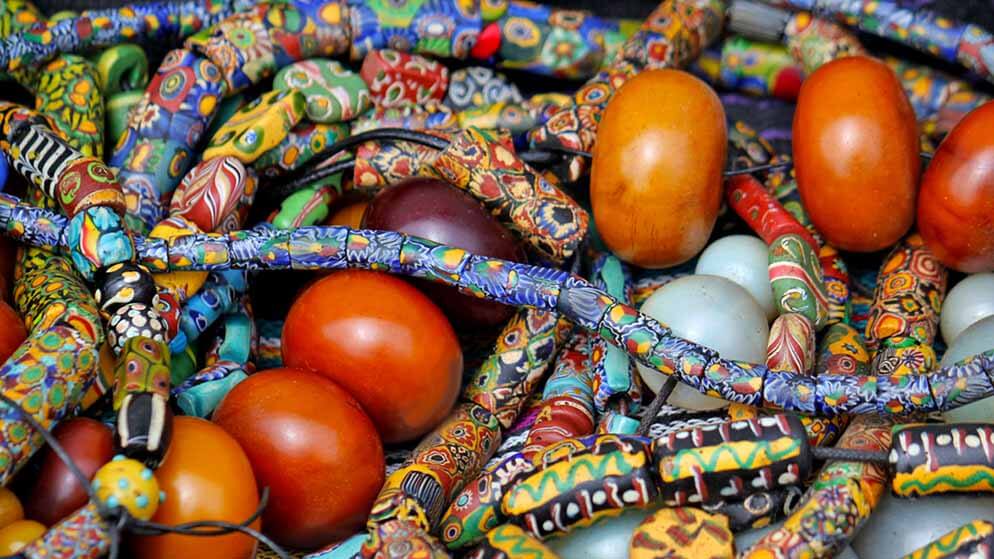Peoples of all cultures have used beads since ancient times, be it for personal adornment, for protection against evil powers, or as symbols of status and wealth Jewelry and ornaments made of many different materials some pure in their natural form and some formed by human hand have been traded all over the world. When looking at African beads, there are two main categories of beads, the first being African traded European-made beads and the second beads made by African artisans.
Beads became objects of trade, and particular types of beads attained such well-established values that they were used as currencies in pre-colonial Africa. Among the items that were exchanged by trade were iron, salt, cowry shells, brass rods, palm oil, gin, gold dust, cattle, goats, sheep, brass bracelets, copper rods, muskets, powder, slaves, and of course beads. In the 19th and 20th centuries, a great variety of glass beads, such as Chevrons, Venetian, Bohemian, and Millefiori, were manufactured by the flourishing European bead industries of Venice, Italy, and Bohemia-Czechoslovakia, especially for export to West Africa. Ever since the 1960s when the bead was discovered as a collectible item-these so-called African Trade Beads have been made available to American, European, and, more recently, Asian clientele by African bead dealers who spend many months of the year traveling throughout West Africa and beyond to source their merchandise. Several centuries after their manufacture, whole strands composed of European-made glass beads are now returning to their countries of origin, accompanied by a variety of beads produced by African industries.
Because of the abundance and desirability of European- made beads in West Africa and among non-African collectors alike, it is easy to forget that West African cultures such as the Krobo and Ashanti of Ghana and the Yoruba of Nigeria have long traditions of bead making of their own. Sadly, many of these bead industries have ceased to exist. While traditional techniques such as wax-casting, employed in the manufacture of brass beads and ornaments, are still practiced, and while the Ghanaian industries have been very successful in developing ever more colorful and interesting styles of powder glass beads, the art of making Mauritanian powder glass Kiffa beads appears to have become extinct with the passing on of the last bead makers in the 1970s. Only recently could it be established that certain types of glass beads ascribed to the European or Middle Eastern industries were manufactured by the Yoruba almost a thousand years ago.
Beyond glass beads, Africans also made beads and jewelry using such materials as seeds, nuts wood, stone, metal (iron, gold, brass.. etc.), bones, claws, teeth, clam, eggshell, and clay. Some of these nature based beads ofen had a spiritual meaning to Africans and represented many aspects of their lives. For instance, coral, ivory, brass, and gold- durable, expensive, and exclusive – are associated with Africans of privilege. To the Berber, shell, coral, and amber were known to have therapeutic properties integral to their culture. And for the Oromo, iron represented strength, resistance, and divine power and is thought to be of meteorite origin that “fell from the heavens”.
Today, African beads are often misunderstood, misidentified, and undervalued. With its presentation of beads manufactured by and unique to African cultures and descriptions of the techniques used in their manufacture, “African Beads: Jewels of a Continent” is an invaluable guide and reference book to African culture, beads, and bead making.




